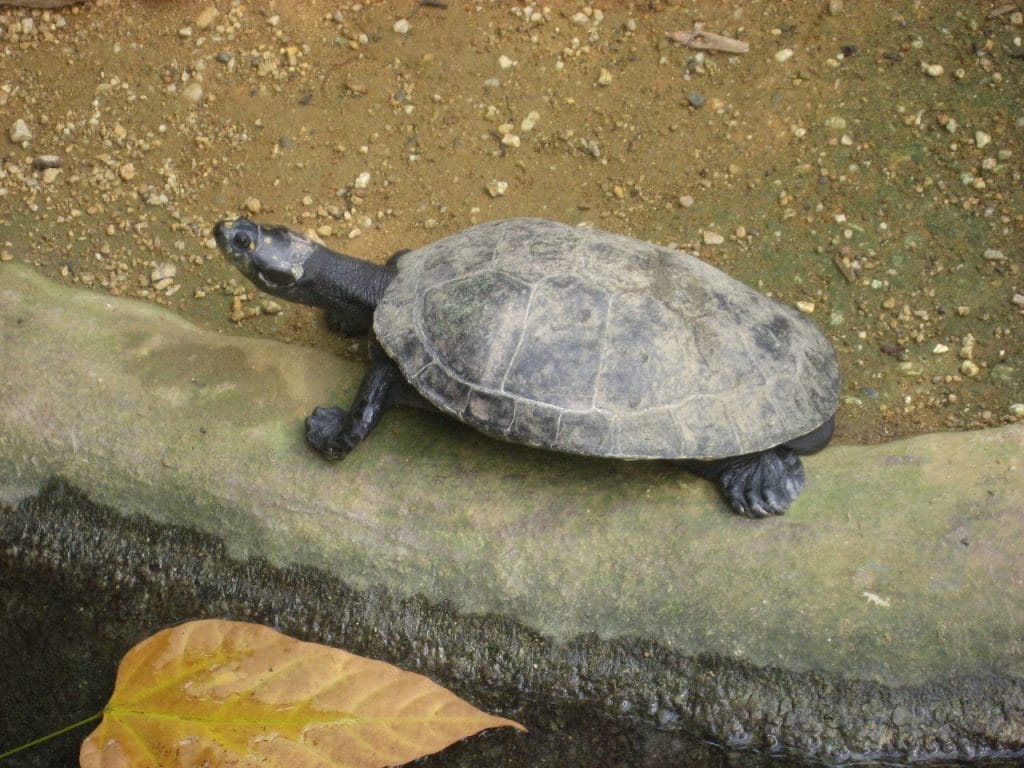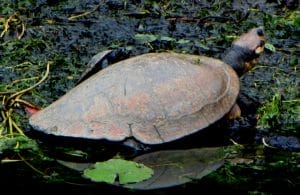Podocnemis unifilis (Yellow-spotted Amazon River Turtle)
Home > Turtle Database > Podocnemis unifilis (Yellow-spotted Amazon River Turtle)

Podocnemis unifilis, or the Yellow-spotted Amazon River Turtle, is a freshwater turtle found in South America. It’s easily recognized by the bright yellow spots on its head, especially in younger turtles. This species plays an important role in the ecosystem of the Amazon basin.
Native To These Regions
Acre (Brazil), Amapá (Brazil), Amazonas (Brazil), Beni (Bolivia), French Guiana, Loreto (Peru), Madre de Dios (Peru), Pando (Bolivia), Pará (Brazil), Rondônia (Brazil), Roraima (Brazil)Native Turtle Species Map – Find Turtles by Region
Scientific Classification
Kingdom: Animalia
Phylum: Chordata
Class: Reptilia
Order: Testudines
Family: Podocnemididae
Genus: Podocnemis
Species: Podocnemis unifilis
Common Names
Yellow-spotted Amazon River Turtle
Yellow-headed Side-neck Turtle
This Hilarious Turtle Book Might Know Your Pet Better Than You Do
Let’s be real—most turtle care guides feel like reading a textbook written by a sleep-deprived zookeeper.
This one’s not that.
Told from the snarky point of view of a grumpy, judgmental turtle, 21 Turtle Truths You’ll Never Read in a Care Guide is packed with sarcasm, sass, and surprisingly useful insights.
And hey—you don’t have to commit to the whole thing just yet.
Grab 2 free truths from the ebook and get a taste of what your turtle really thinks about your setup, your food choices, and that weird plastic palm tree.
It’s funny, it’s honest, and if you’ve ever owned a turtle who glares at you like you’re the problem—you’ll feel seen.
Identification
Description
This turtle has a flattened, oval shell that ranges in color from olive to dark brown. The head is dark with several bright yellow spots, which are most visible in juveniles. It has webbed feet and a side-neck posture, meaning it bends its neck sideways to hide under the shell rather than pulling it straight in.
Sexual Dimorphism
Females are generally larger than males and have shorter, thicker tails. Males have longer claws and tails, which they use during mating.
Check more turtles from the Podocnemis genus
Native Origin and Distribution
Geographical Range
Found throughout the Amazon and Orinoco River basins, including countries like Brazil, Venezuela, Colombia, Peru, Bolivia, and Ecuador.
Preferred Habitat
They prefer slow-moving freshwater habitats such as rivers, oxbow lakes, flooded forests, and swamps. They need sandy or muddy banks for nesting.
Behavior
Feeding Habits
This species is omnivorous. It eats aquatic plants, fruits, seeds, insects, mollusks, and small fish. Juveniles eat more protein, while adults eat more plant matter.
Predators
Eggs and hatchlings are eaten by birds, fish, and mammals. Adults have fewer natural predators but can be attacked by large carnivores or caught by humans.
Reproduction
Breeding Season
Breeding usually occurs during the dry season, and nesting happens in the late dry or early rainy season.
Reproductive Method
Females lay clutches of 15–50 eggs in sandy banks. Incubation lasts about 70 to 100 days, and temperature affects the sex of the hatchlings.
Conservation
Extinction Status
Listed as Vulnerable on the IUCN Red List.
Threats
Major threats include habitat destruction, illegal pet trade, and overharvesting of eggs and adults for food.
Conservation Measures
Protected under CITES Appendix II. Several community-based conservation programs now monitor nests and release hatchlings back into the wild.
Economic Importance
Locals harvest this turtle for meat and eggs. It is also sold in the illegal pet trade. Conservation efforts now focus on sustainable use and ecotourism.
Interesting Facts
They can live up to 60 years in the wild.
Despite their large size, they can be very shy and often bask in groups on logs.
They play a key role in seed dispersal in the Amazon rainforest.

About Author
Muntaseer Rahman started keeping pet turtles back in 2013. He also owns the largest Turtle & Tortoise Facebook community in Bangladesh. These days he is mostly active on Facebook.














